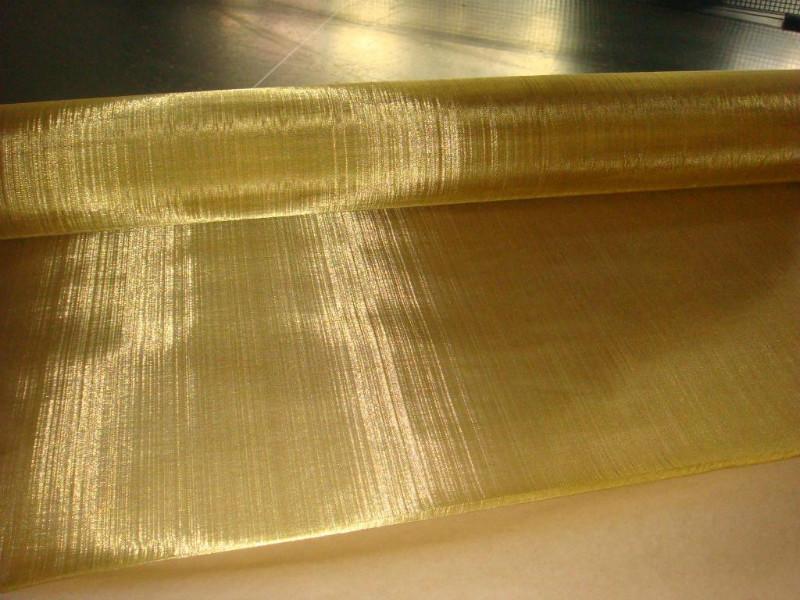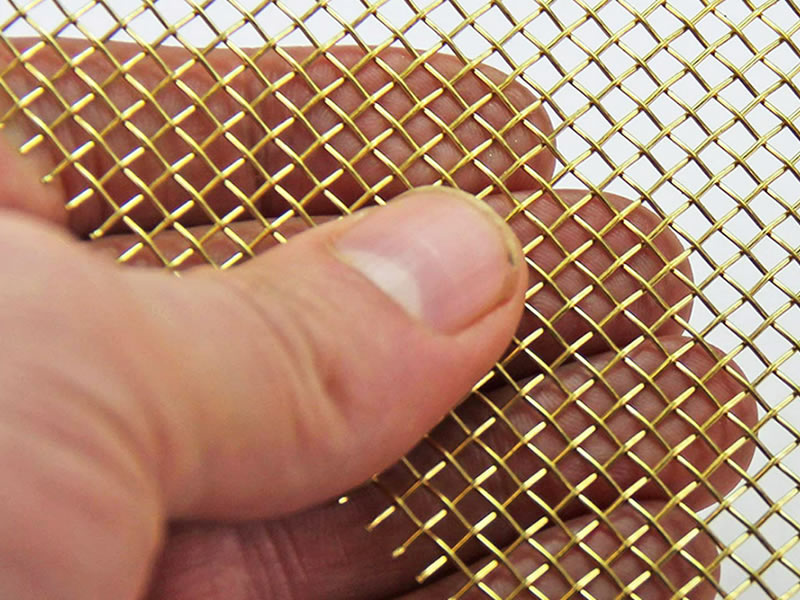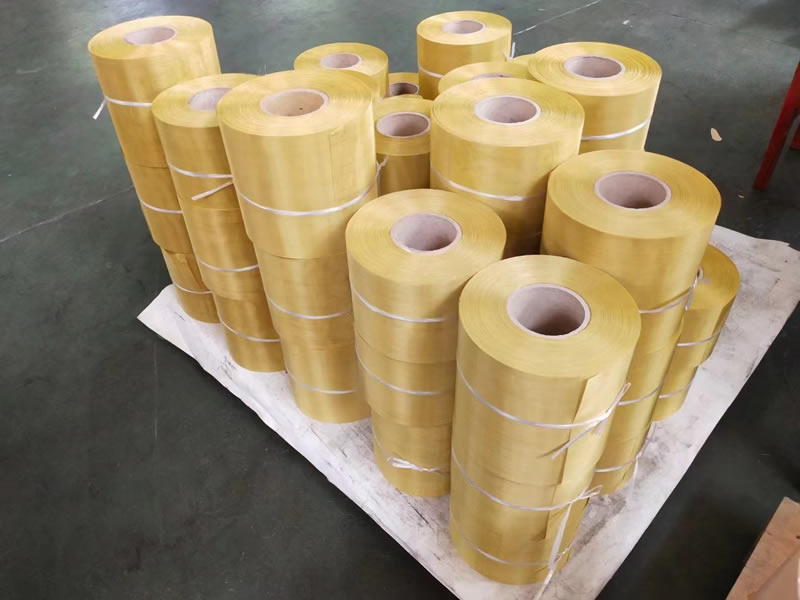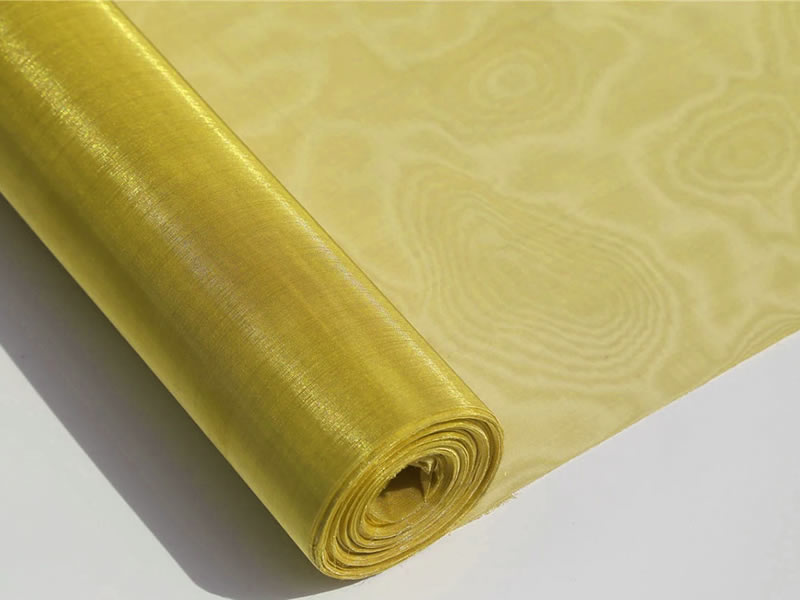Specifications of Brass Woven Wire Mesh
- Mesh Size Range: Brass mesh comes in many different sizes, from 20 mesh (larger openings) to 500 mesh (very small openings).
- Common Mesh Sizes: Some of the most frequently used mesh sizes include 20, 30, 40, 50, 60, 80, 100, 200, and 500.
- Wire Thickness Range: The individual wires that make up the mesh can be thin, starting at 0.1 mm, or thick, going up to 2 mm.
- Common Wire Thicknesses: Typical wire thicknesses used in brass mesh are 0.1 mm, 0.15 mm, 0.2 mm, 0.3 mm, 0.5 mm, 1 mm, and 2 mm.
- Opening Size Range: The size of the holes in the mesh (aperture) changes depending on the mesh size, generally from 0.5 mm to 3 mm.
- Example Opening Sizes: For instance, a 20 mesh has holes about 1.0 mm wide, while a 100 mesh has holes around 0.15 mm wide.
- Opening Width Range: The width of each individual opening in the mesh can also be described as ranging from 0.05 mm to 1 mm.
- Weave Types: Plain Weave, Twill Weave, and Dutch Weave.
- Material Composition: The wire mesh is made entirely of Brass Alloy, which is a mixture of copper and zinc.
- Standard Surface Look: The natural color of brass mesh is golden.
- Alternative Surface Look: Sometimes, the brass mesh is electroplated to give it a different look or properties.
- Protection Options: To prevent rust or damage, coatings like lacquer can be applied to the mesh.
- Standard Sheet Size: Common sizes for sheets of brass mesh are 1 meter by 2 meters (about 39 inches by 79 inches), but other sizes can be made.
- Roll Width Range: When the mesh comes in a roll, the width is usually between 1 meter and 2 meters (39 to 79 inches).
- Roll Length Range: The length of a roll of brass mesh can vary quite a bit, from 10 meters to 100 meters (33 to 328 feet).
- Strength Measurement: The strength of the brass mesh (tensile strength) is usually between 450 and 800 N/mm², depending on how thick the wires are.
- Weight Range: The weight of the mesh can vary from 1 kg per square meter to 10 kg per square meter, mainly depending on the wire thickness and how many holes there are.
- Heat Resistance: Brass mesh can be used in places where the temperature gets up to 200°C (392°F).
- Rust Prevention: Brass mesh is generally very good at resisting rust in many different environments.
- Customization : The patterns of the mesh, the thickness of the wires, and the finish can often be changed to fit specific needs.
- Use: It can act as a filter to clean liquids, gases, oils, and chemicals by trapping unwanted bits. It’s also good for screening, like keeping out insects, dust, and other small pieces. Additionally, this mesh can help block electronic signals in devices. Finally, brass mesh is sometimes used to add an interesting look to buildings and designs.
Pictures Display

Multiple full‑width rolls indicate high‑precision micro‑mesh for laboratory sieving and EMI shielding. Approximate mesh count 180–250, wire Ø 0.08–0.12 mm, aperture 0.06–0.10 mm, roll width 1.2 m, length 50 m. Bright annealed finish ensures uniform conductivity and clean appearance; rolls are interleaved with moisture‑barrier paper and packed in wooden cases.

A wide roll of fine, lustrous cloth for liquid and gas filtration. Estimated mesh count 100–150, wire Ø 0.12–0.18 mm, aperture 0.10–0.18 mm, roll width 1.0 m, length 30 m. Plain or twill weave provides precise particle control, corrosion resistance, and good formability; each roll is poly‑wrapped and tube‑cored.

The close‑up reveals a coarse square weave held between fingers. Approximate mesh count 8–12, wire Ø 0.45–0.60 mm, opening 1.2–1.6 mm, sheet size up to 1 m × 2 m. Rugged yet formable, it suits speaker grilles, fireplace screens, insect guards, and architectural accents; panels are supplied flat or rolled in kraft‑lined cartons.

Shown are narrow, pallet‑packed rolls for pulp and sludge dewatering screens. Estimated width 100–150 mm, roll length 30 m, mesh count 30–60, wire Ø 0.30–0.50 mm, aperture 0.30–0.70 mm, plain weave. Heavy brass construction delivers abrasion resistance, rapid drainage, and easy installation; rolls are strapped and stretch‑wrapped for shipment.
| Mesh/Inch | Wire Diameter(mm) | Aperture(mm) | Open Area % |
| 4 | 1.2 | 5.15 | 65.8 |
| 5 | 1 | 4.08 | 64.5 |
| 6 | 0.71 | 3.52 | 69.2 |
| 8 | 0.5 | 2.67 | 70.7 |
| 10 | 0.5 | 2.04 | 64.5 |
| 12 | 0.45 | 1.66 | 61.5 |
| 14 | 0.4 | 1.41 | 60.4 |
| 16 | 0.3 | 1.28 | 65 |
| 18 | 0.25 | 1.16 | 67.6 |
| 20 | 0.25 | 1.02 | 64.5 |
| 30 | 0.21 | 0.64 | 57.1 |
| 40 | 0.19 | 0.45 | 50.2 |
| 50 | 0.15 | 0.36 | 50.1 |
| 60 | 0.15 | 0.27 | 40.7 |
| 80 | 0.12 | 0.197 | 39 |
| 100 | 0.1 | 0.154 | 37 |
| 120 | 0.09 | 0.122 | 33.2 |
| 140 | 0.07 | 0.111 | 37.6 |
| 150 | 0.06 | 0.109 | 41.5 |
| 160 | 0.06 | 0.098 | 38.1 |
| 180 | 0.053 | 0.088 | 41.6 |
| 200 | 0.05 | 0.077 | 36.7 |
| Note: Special size and specification can be customized. | |||



